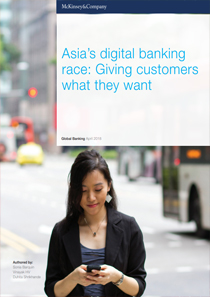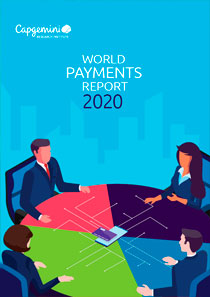Analytics & compliance

Banking in Asia-Pacific
Time to reinvent the digital landscape
The Asia–Pacific (APAC) banking sector offers opportunities for all banks. But, with disruptors and platform players redefining the financial services landscape, and with banks’ profitability under pressure, not all banks can be winners. To succeed, incumbent players must accelerate their digital maturity and exploit their unique strengths. In particular, to optimize, grow and protect their business, they must embrace:
- Intelligent automation to deliver efficiencies
- Open application programming interfaces (APIs) to allow them to participate in the emerging data–sharing ecosystem and realize new growth opportunities
- Digital strategies to manage financial crime and cybersecurity risks

Asia’s digital banking race: Giving customers what they want
Smartphones in hand, customers across Asia are changing how they bank, growing more open to exploring and using digital channels for their financial needs. This openness to digital channels will reward those banks that can meet customers’ expectations; but it also represents a challenge to incumbent banks—because customers are also expressing a willingness to bank with non-traditional players such as fintechs and nonbanking payments players. Incumbent banks need a response to this changing landscape if they are to remain relevant and sustain growth.

PwC’s 2018 Digital Banking Consumer Survey: Mobile users set the agenda
Consumer banking habits have continued to evolve, and users have many choices for how and where they bank. New devices and digital banking tools give consumers the convenience of banking on the go, but the traditional banking center still has plenty of fans for certain kinds of transactions. In PwC’s 2018 Digital Banking Consumer Survey, we look beyond this split to see how firms can serve the needs of today’s consumers. One conclusion: banks need to think “mobile first” to win in this market.

Capgemini’s World Payments Report 2020: will COVID-19 spark the end of cash payments?
A recipe of increased payment volume consumer behavior shifts, and greater risk create a new landscape for payments.
Paris, October 6, 2020 – Payment firms are being pushed rapidly into transformation, even as they handle larger transaction volumes, face increased competition and heightened risk factors amplified by COVID-19, according to the World Payments Report 2020 published today by Capgemini.

Worldpay’s 2021 Payment Risk Mitigation survey
The Worldpay from FIS® 2021 Global Payment Risk Mitigation report offers an overview of the global payment fraud landscape, including the top payment trends and challenges merchants faced in 2020, and their plans to rebuild smarter in 2021. There were asked about payment and fraud mitigation initiatives, the investments merchants are prioritizing, the return they’re seeking to realize from those investments, and how they’re evaluating fraud detection and ID verification solutions.

12th Annual EY-IIF Bank Risk Management Survey
Cybersecurity has returned to the top of the list of near-term risks for banks around the world, according to the latest EY and Institute of International Finance (IIF) bank risk management survey. As with past studies, the 2022 results present CROs’ views on the most urgent issues facing their organizations, and those that they expect will take on more importance in the next three to five years. The 12th edition of this joint report is based on survey data from 88 banks across 30 countries. Cybersecurity is viewed as the top year-ahead risk, followed by credit and environmental risks, according to the 12th Annual EY/IIF Global Bank Risk Management Survey – “Seeking Stability within Volatility: How Interdependent Risks put CROs at the Heart of the Banking Business.”
